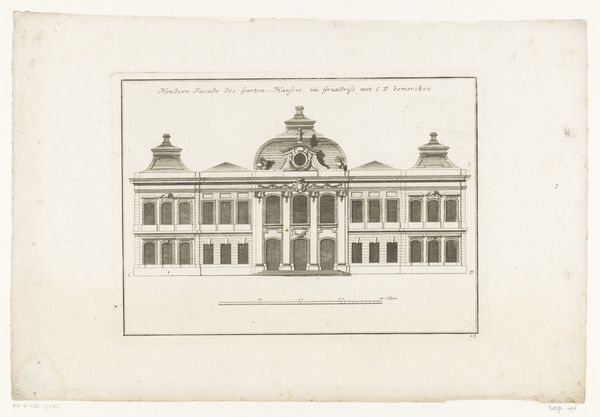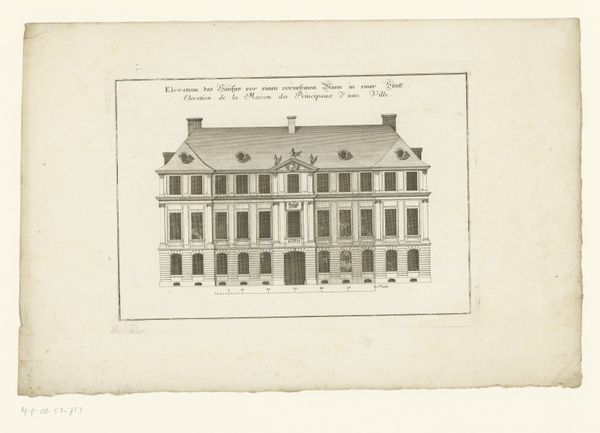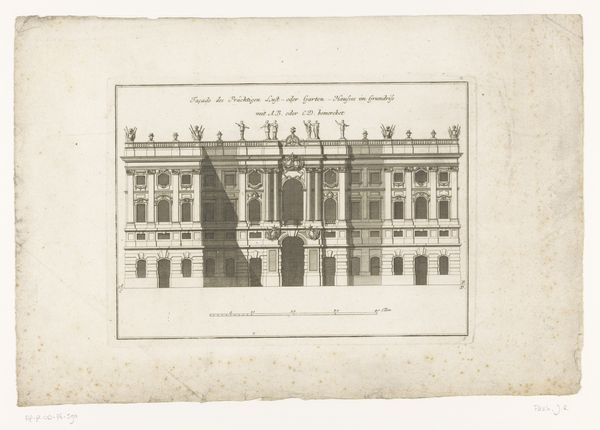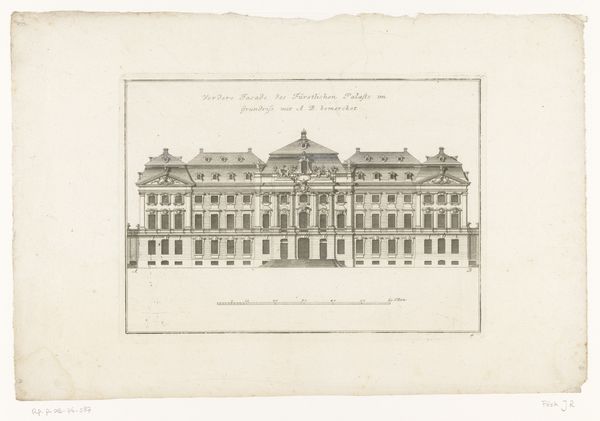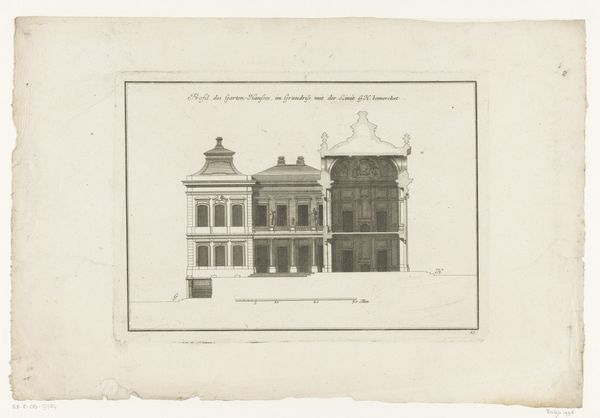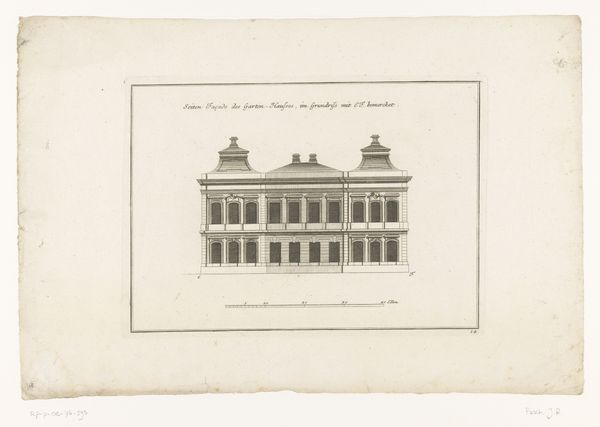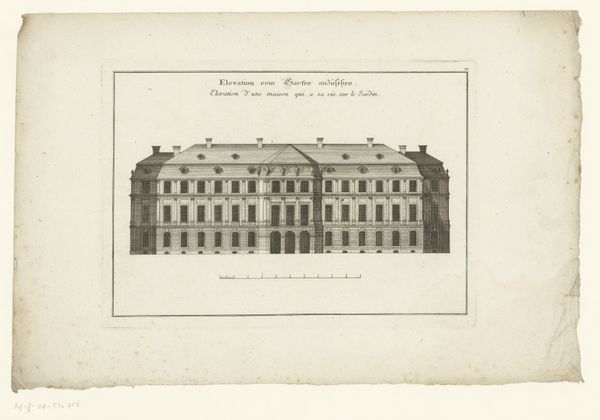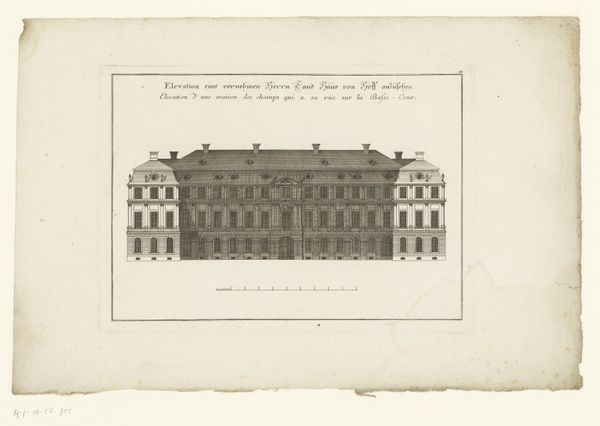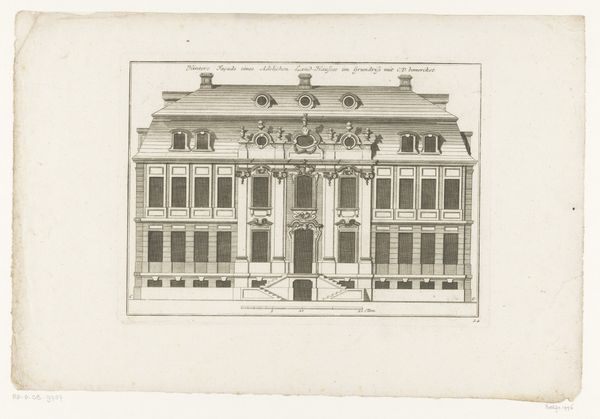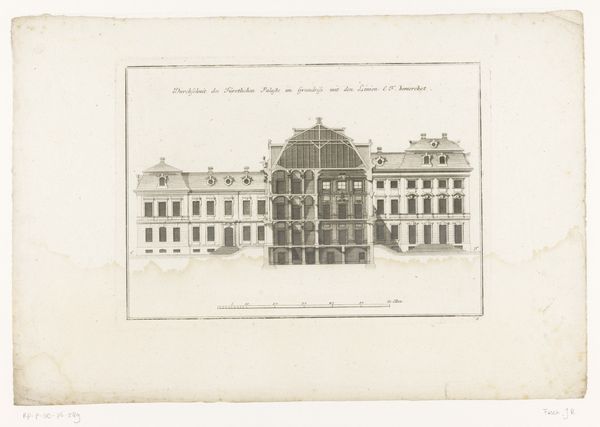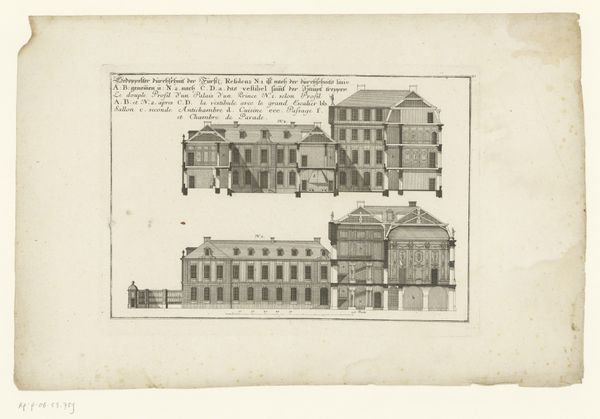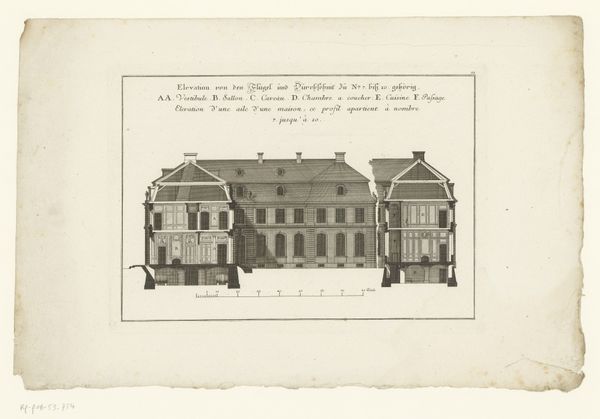
drawing, print, etching, paper, architecture
#
drawing
#
baroque
# print
#
etching
#
old engraving style
#
paper
#
cityscape
#
architecture
Dimensions: height 218 mm, width 302 mm
Copyright: Rijks Museum: Open Domain
Curator: Looking at this image, I see something rigid. Very controlled. Editor: It certainly projects control. Here, we're examining an etching from 1729, entitled "Frontfaçade van een tuinpaviljoen"—Front Facade of a Garden Pavilion—rendered anonymously. The use of line work conveys the architect's precise intentions. Curator: The architectural draft style reinforces that idea. It really highlights how the structure's imposing presence relies on symmetry, clean lines, and the repetition of forms. There’s not much of a space for nature it looks like from the image. Editor: That denial of nature is interesting. Consider how these gardens functioned within the baroque period. The ruling class exerted power not only through politics, but by showcasing dominion over land, space, and, symbolically, even nature. Gardens are sculpted, buildings are carefully designed. All projecting a sense of power. Curator: Yes! This aesthetic was definitely linked to displays of dominance in 18th century politics, even dictating social interactions, reinforcing the power of patrons who commissioned these grand structures and gardens. They were backdrops to social ritual. Editor: And think of who inhabited these spaces: Wealthy elites largely benefiting from colonial exploits that involved massive oppression and the global trade in enslaved people. In a way, this image—so clean, precise, and organized—obscures the true human cost. Curator: By representing that built environment, this engraving allows us to interpret a fragment of baroque ideology from that historical moment in time, as filtered through its architecture and dissemination in print. What seems simple is actually embedded with meaning. Editor: Exactly. Recognizing those tensions, even in seemingly simple images like this, can promote discussions around power and oppression. We need to understand them. Curator: So, it isn’t merely a historical image of architecture. It prompts us to investigate those historical forces embedded in art itself. Editor: A necessary connection that broadens the understanding of the built environment and how power structures work.
Comments
No comments
Be the first to comment and join the conversation on the ultimate creative platform.
